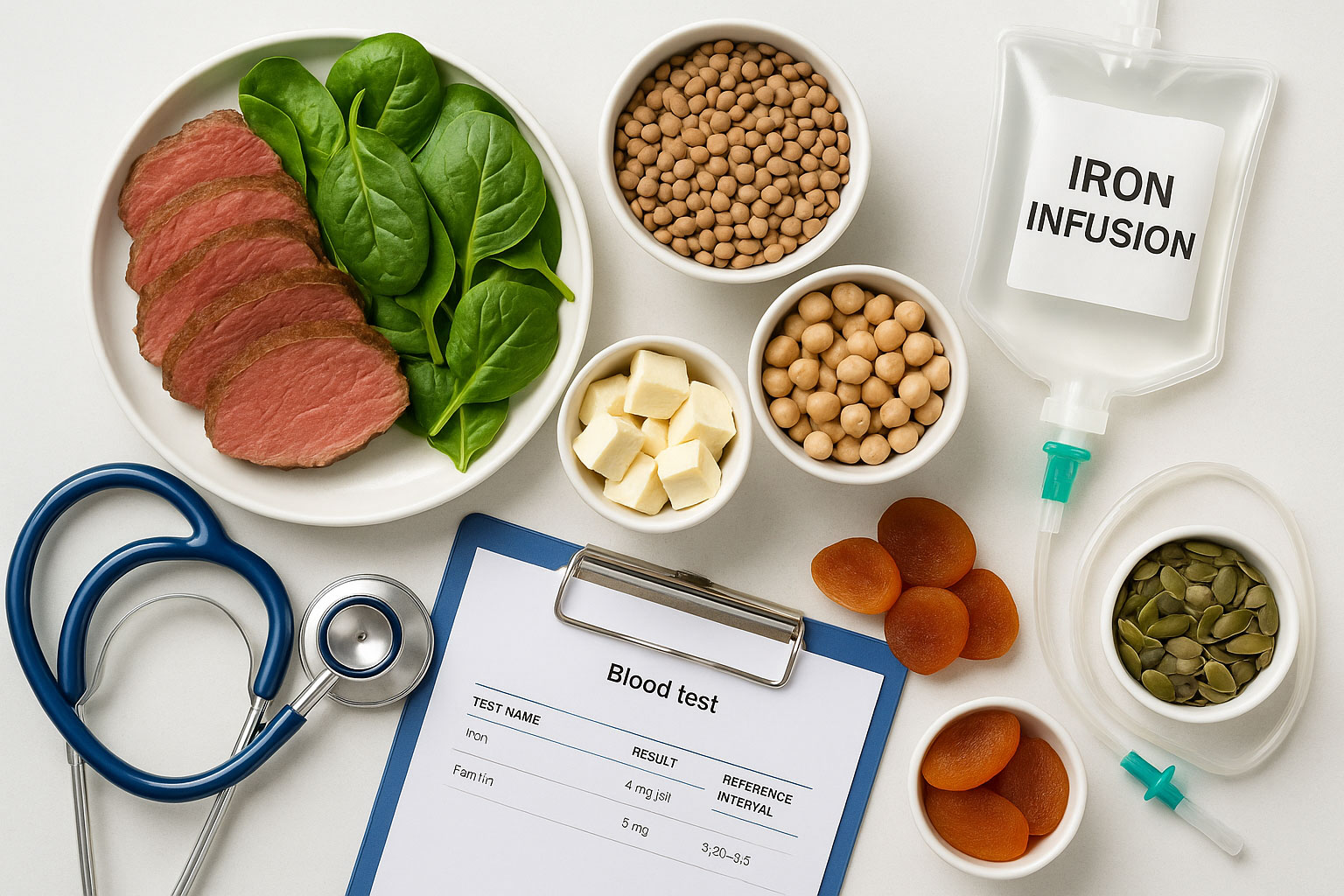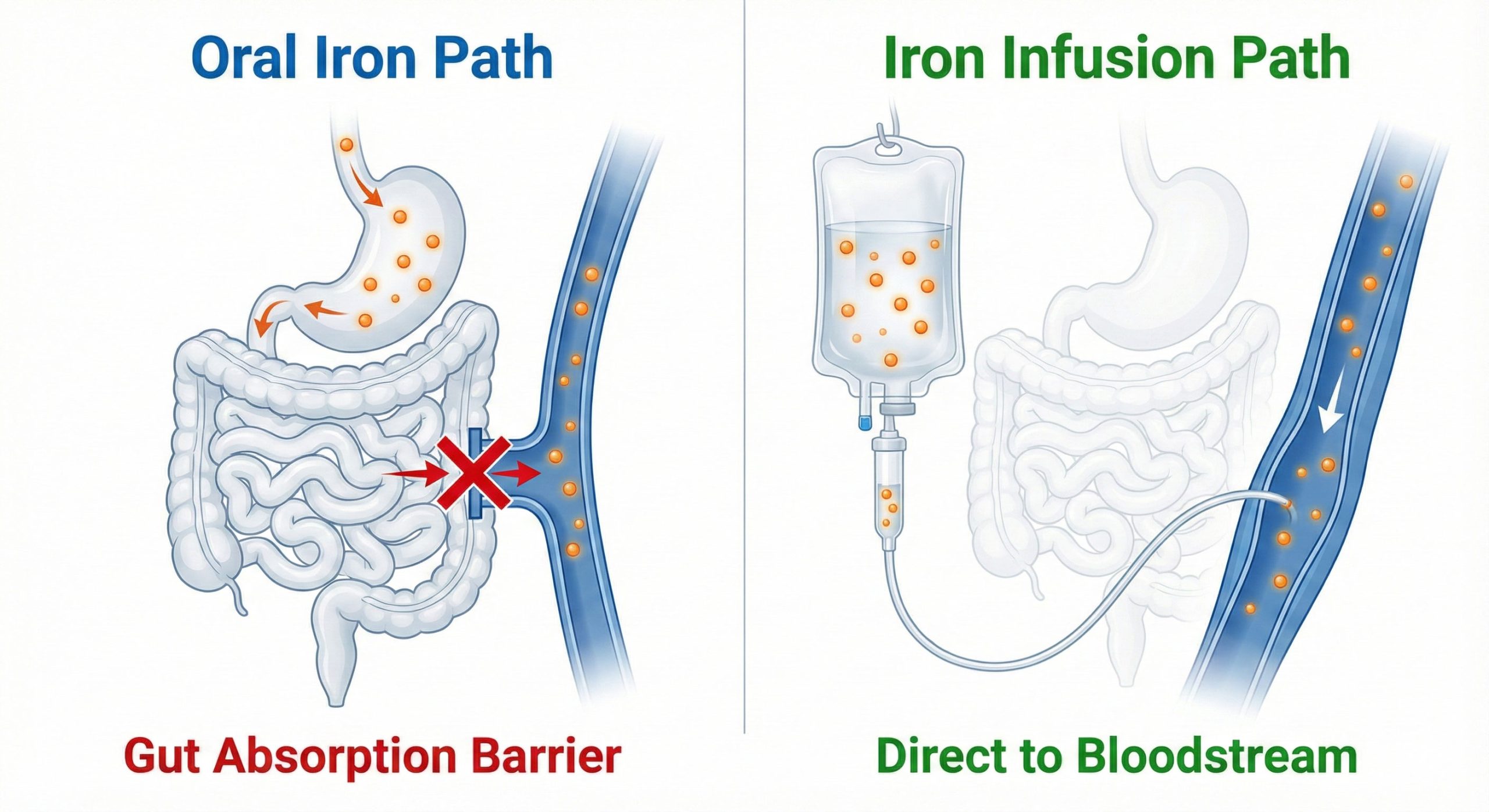Iron is a vital mineral that supports many essential processes in the body. It plays a key part in producing energy and helps maintain an effective immune system. When iron levels fall too low, both energy and immunity can be affected, making day-to-day life more challenging.
In Australia, treatment options for iron deficiency usually begin with dietary changes and oral supplements, but some people require intravenous support. For patients who need faster correction or who cannot tolerate tablets, an iron infusion treatment in Melbourne may be recommended under medical supervision.
How Iron Supports Energy Production
Iron is central to haemoglobin, the protein in red blood cells that transports oxygen around the body. It is also present in myoglobin, which stores oxygen in muscles for use during activity.
Beyond these roles, iron is part of enzymes in the mitochondria that support energy production at a cellular level. Without enough iron, less oxygen reaches tissues, and the body’s ability to generate energy is reduced. This is why people with low iron often feel fatigued, struggle with concentration, or notice reduced exercise tolerance.
Iron and the Immune System
The immune system relies on iron to help white blood cells grow and function. Neutrophils and macrophages, which act as the first line of defence against infection, require iron to work effectively. Iron also supports the development of lymphocytes and the production of antibodies, which are important for long-term immune memory.
Both low and high iron levels can affect the body’s ability to fight infection. During illness, the body naturally reduces iron availability as part of its defence strategy, showing how closely iron balance is tied to immune function.
Iron Balance and Regulation
The body regulates iron carefully because both deficiency and excess can cause problems. A hormone called hepcidin controls how much iron is absorbed from food and when it is released from stores.
Iron is also recycled when old red blood cells are broken down, helping maintain supply. This regulation explains why people should not take iron supplements without medical advice, as too much iron can be harmful.
Causes of Iron Deficiency
Iron deficiency is common and can occur for many reasons. These include:
- Low dietary intake over time.
- Increased requirements during pregnancy or adolescence.
- Blood loss from heavy periods, gastrointestinal conditions, or surgery.
- Reduced absorption from chronic conditions such as coeliac disease or after bariatric surgery.
- Chronic illnesses that affect how the body uses or stores iron.
Groups at Higher Risk
Certain groups are more likely to experience low iron. These include women of reproductive age, pregnant and postpartum people, children, and adolescents. Vegetarians and vegans may also be at higher risk if dietary intake is not balanced.
Athletes, particularly those engaged in endurance sports, can develop deficiency due to both increased demand and iron loss through sweat or small amounts of gastrointestinal bleeding linked to intense exercise. People with chronic kidney disease or long-term gastrointestinal conditions may also need closer monitoring.
Recognising Low Iron Levels
Symptoms of iron deficiency vary, but common signs include fatigue, pale skin, dizziness, and more frequent infections. Some people also report shortness of breath, brittle nails, or restless legs.
These symptoms are not specific to low iron and may be linked to other conditions, which is why professional assessment is important rather than self-diagnosis.
Understanding Iron Tests
Doctors use blood tests to confirm iron deficiency. A full blood count shows whether anaemia is present. Ferritin reflects iron stores, while transferrin saturation provides information on how much iron is available for use. Ferritin can rise during inflammation or infection, which may mask low iron.
This is why doctors interpret results in context and may order more than one test to reach a clear diagnosis.
Managing Iron Deficiency
Treatment depends on the severity of the deficiency and the underlying cause.
- Dietary strategies: Increasing iron-rich foods and pairing them with vitamin C can help improve intake.
- Oral supplements: Tablets or liquid forms provide a steady supply but can cause gastrointestinal side effects. Treatment often continues for several months to restore stores.
- Iron infusions: In some cases, iron is given directly into the bloodstream. This may be considered when tablets are not effective, not tolerated, or the deficiency is more severe. Infusions are carried out in a clinical setting under supervision.
Addressing the underlying cause, such as heavy menstrual bleeding or chronic illness, is just as important as replacing iron.
Supporting Iron Through Diet and Lifestyle
Haem iron, found in animal sources such as red meat, chicken, and fish, is more readily absorbed than non-haem iron in plant sources like legumes, nuts, and leafy greens. Combining plant foods with vitamin C-rich fruits or vegetables improves absorption.
Tea, coffee, and calcium-rich foods can reduce absorption if taken at the same time as iron. Maintaining a balanced diet helps support iron levels once stores have been corrected.
Everyday Tips While Recovering
When recovering from iron deficiency, pacing activity, maintaining regular meals, staying hydrated, and prioritising sleep can make symptoms easier to manage. A gradual return to exercise, guided by a healthcare professional, may also help once energy begins to improve.
Monitoring and Long-Term Care
Iron treatment requires follow-up. Doctors often recheck blood tests a few months after starting therapy to confirm whether levels are rising.
Even when blood counts return to normal, supplements may continue for some time to rebuild stores. Regular monitoring helps prevent both ongoing deficiency and excessive iron.
Common Misconceptions
There are several misunderstandings about iron:
- Fatigue always means iron deficiency — tiredness has many possible causes.
- More iron is always better — excess iron can be harmful.
- Diet alone always corrects deficiency — sometimes supplementation or infusion is required.
- A single blood test is enough for diagnosis — results often need context and repeat testing.
When To Seek Medical Advice
If you experience symptoms such as persistent fatigue, frequent infections, or shortness of breath, it is important to seek medical advice.
A professional assessment can confirm whether iron deficiency is present and guide the safest treatment plan. Self-prescribing supplements without testing is not recommended.
FAQs
Q1: How does low iron affect energy day to day?
A1: Low iron reduces oxygen delivery to muscles and tissues, often leading to tiredness, difficulty concentrating, and reduced physical performance.
Q2: Can improving iron status support immune function?
A2: Yes. Iron helps white blood cells and antibodies function effectively. Both low and high iron levels can affect immunity, so balance is important.
Q3: Which tests confirm low iron?
A3: Doctors often request a full blood count, ferritin, and transferrin saturation. These results are interpreted together to provide a clear picture.
Q4: Is diet alone enough to restore iron levels?
A4: In mild cases, dietary changes may help, but moderate or severe deficiency usually requires supplements or infusions.
Q5: When might a doctor recommend an iron infusion?
A5: Infusions are considered if oral supplements are not effective, not tolerated, or if deficiency is severe and needs quicker correction.
Q6: How long does it take to feel better once treatment starts?
A6: Some people notice improvement within weeks, while for others it may take longer. Recovery depends on the severity of deficiency and the type of treatment used.
Q7: How often should iron levels be checked?
A7: Blood tests are usually repeated a few months after starting treatment. Ongoing monitoring may be needed in people at higher risk of recurrence.
Disclaimer
This information is intended for general education only and should not replace personalised medical advice. Always seek the guidance of a qualified healthcare professional for diagnosis and treatment options tailored to your individual needs.



